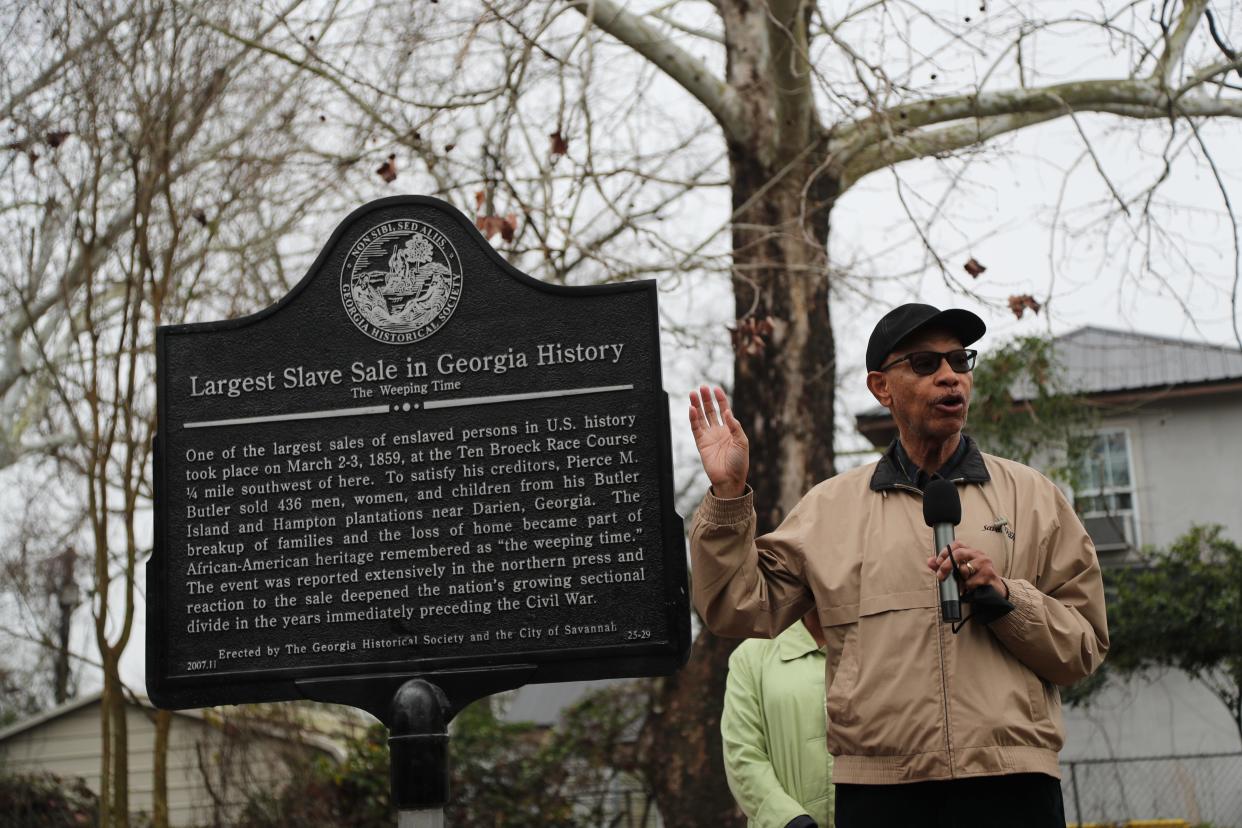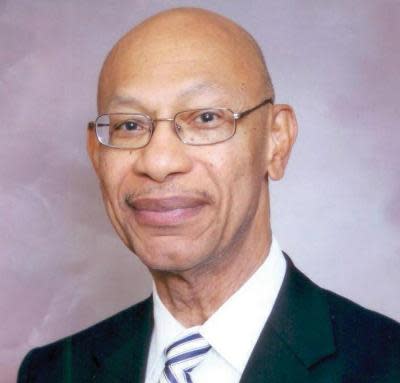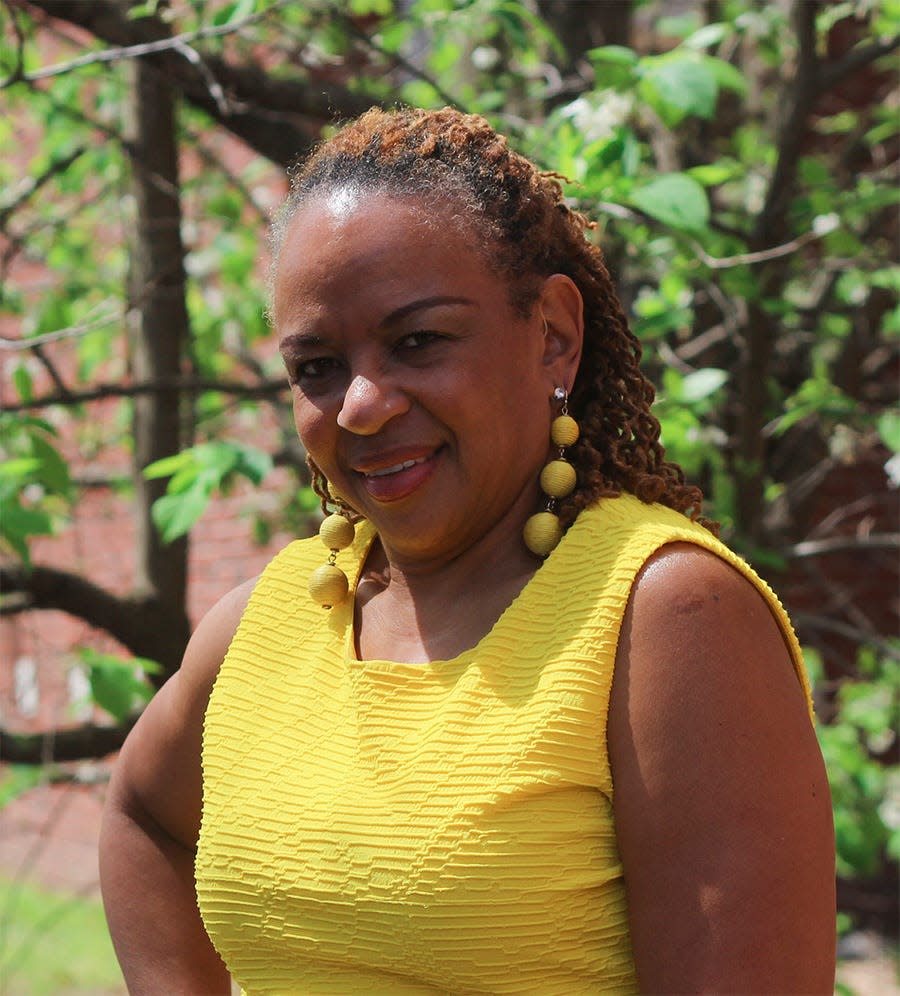Former Savannah Mayor Otis Johnson, an elder with many lessons still to share

An African proverb says, “When an elder dies, a library burns to the ground.” This saying speaks to the vast knowledge retained in the minds of seasoned contributors to society. With that being the case, it is prudent to glean as much knowledge as possible from them while they are still living.
It is for that reason that I decided to interview Otis S. Johnson for my April 2024 column. His 2016 autobiography is entitled “From ‘N Word’ to Mr. Mayor: Experiencing the American Dream.” He is a native Savannahian, and his presence dominates any room he enters ― and when he speaks, everyone listens.

At age 82, Johnson has experienced a significant amount of Savannah’s modern history. At the time of his birth, there were only two hospitals that accepted Black patients, Charity Hospital and the Georgia Infirmary Hospital, where he was born in 1942.
The Savannah he grew up in was segregated, but peaceably so. There was a clear racial etiquette that guided the behavior of African Americans and whites. The two cultures coexisted in a mostly polite world where everyone knew their place and stayed in their place. It was understood that Blacks were supposed to stay in their own neighborhoods. If Blacks didn’t have any business in a white neighborhood, they knew not to go there.
Johnson’s grandparents raised him and his younger brother. They lived in a working-class Black neighborhood where he learned that living in a segregated society did not equate to him being a minority who was inferior in any way.
The two Savannahs
During Johnson’s childhood, even poverty in Savannah had a color. Indeed, as Johnson has said often, there are two Savannahs – one for the “haves” and one for the “have-nots.” The African American population belonged to the latter, especially in public housing and schools.
During the separate-but-equal era, true equality did not exist. Buildings used for the education of Black children were existing structures designed for other purposes that were turned into schools. Johnson called the public school system experience of those times "the apartheid" public education system. For the 12 years he was in schools (1948-1960), he was forced to attend all-Black schools with all Black teachers. This period served as a type of positive incubator for him—leaving him with a sense of intellectual empowerment while shielding him from harsh racism he may have experienced in an integrated school environment.
Johnson attended Paulsen Street Elementary School in 1948 when he was 6 years old. True to the practice of that era, it was a two-story shirt factory that had been transformed into a school for Black children. It consisted of 11 classrooms. All desks and books came from nearby white schools. Sensing some inequities, young Johnson asked his teacher why they had old books from Romana Riley Elementary School—the name stenciled on the inside cover of every book.
The answer? “Two plus two equals four in an old book or a new book.” And that was that.
The Black teachers of that era were committed to instilling a basic educational foundation in their students to prepare them for success in the world. This included insisting that Black students learn to speak correct English. Johnson has strong Gullah Geechee roots and grew up pronouncing some words with its distinct patois, which was frowned upon. His teachers repeatedly corrected him and insisted that he speak “proper English.”
Birth of a civil rights leader
The 1954 Supreme Court decision Brown v. the Board of Education occurred when Johnson was in the sixth grade, and he believed that the following school year he and his brother would have the opportunity to attend a white school where he could compete with white children. To his dismay that didn’t happen. In fact, schools in Savannah did not desegregate until the fall of 1963―nine years after that decision. By that time, he had graduated.
Although he grew up in an incubator environment that taught him pride as a young Black boy, Johnson was well aware of the racial divide in Savannah and developed a strong level of “race consciousness” by age 12. Several experiences contributed to his heightened sense of racial inequality: Savannah’s slothful pace at desegreating public schools, the 1955 lynching of 14-year-old Emmett Till and the Montgomery Bus Boycott later that same year, and the opportunity to hear Dr. Martin Luther King Jr. speak during one of his visits to Savannah. The event that sealed his commitment to fight against racial injustice and inequality, however, occurred during his senior year at Alfred Eli Beach High School.
The 1960 sit-ins in North Carolina had begun and other young Black students across the South were following their lead. On March 16, 1960, several members of the Youth Council of the Savannah Branch of the NAACP held a sit-in at the Levy’s Department Store restaurant. Of course, they were denied service. They refused to leave and were subsequently arrested. Two of those arrested were Beach High students. The day they were scheduled to appear in court, Johnson and other students showed solidarity by leaving school and marching from Beach High to court. It was a peaceful demonstration, and they returned to school without incident. However, upon their return, they were met by the principal and were suspended for leaving the p remises without permission. Johnson successfully secured readmission with help from his grandfather (along with a good scolding), and returned to school where he graduated at age 18.
![Kyle Marrero, right, president of Georgia Southern University, reads the historical marker that was unveiled Tuesday on the Armstrong Campus. Participating in the unveiling were l-r former Mayor Otis Johnson, W. Todd Groce, President and CEO of the Georgia Historical Society and Don Waters, chairman of the Georgia Board of Regents. [Steve Bisson/savannahnow.com]](https://s.yimg.com/ny/api/res/1.2/jY4H6INpVnExG8cAtnB2PA--/YXBwaWQ9aGlnaGxhbmRlcjt3PTk2MDtoPTc3Nw--/https://media.zenfs.com/en/savannah-morning-news/194a56823984a03b8b9051825bed533c)
Breaking Armstrong's color barrier
Prior to graduation, Johnson enrolled in the U.S. Navy Reserve. Black students at that time had three choices: work, college, or the military. Employment meant taking a menial job, an option that didn’t appeal to him. He had no money to attend college, so he chose the military.
His time in the Navy meant he missed Savannah’s coming of age in terms of civil rights. He missed most of the actions in Savannah to desegregate lunch counters, beaches and downtown department stores. However, the seed of righting the wrongs of injustice had been planted in him.
After two years in the military, Johnson returned to Savannah and enrolled in Savannah State College. There, again, he experienced a situation where separate-but-equal was merely a statement and not a reality. After participating in a student protest on campus where student demands were partially met, Johnson applied to Armstrong College to make a point. Over 60 Savannah State students had picked up Armstrong applications. However, unbeknownst to him, he was the only one who submitted one. His application was accepted and on June 10, 1963, an announcement was made that Johnson had completed his freshman year of college and was being admitted to Armstrong as the institution’s first Negro student. He saw his actions as doing his part to break down another racial barrier in Savannah.
Being the first African American to attend Armstrong came with many challenges such as enrolling in classes with no backlash, getting to campus safely, being present without causing disruption. The normal process to register for classes took place in a private meeting with two deans and the registrar. The Black-owned Milton Cab Company was contracted to transport Johnson to and from the campus for his required evening courses. A protection cost of $2,950.55 was paid by Armstrong and the Board of Regents to the City of Savannah for the use of police and firemen to secure the campus and ensure Johnson’s safety during his first week.
Savannah newspapers reported on Johnson graduation as the first African American to graduate from Armstrong. The 1964 Commencement was held at the Hotel Desoto, a place where Blacks still could not register as guests. However, they were allowed to enter the hotel, and many attended the graduation ceremony to celebrate this monumental occasion.
Years of service and leadership
Attending Armstrong College was life changing for Johnson. It's where he realized he wanted to be a political activist. Little did he know, he was on the path to becoming the city’s 64th mayor. After earning a two-year degree in liberal arts at Armstrong, he enrolled in the recently desegregated University of Georgia, majored in History and graduated in 1967. Later that same year, Johnson enrolled in Atlanta University School of Social Work (AAUSSW) to earn a Master’s Degree. After completing the MSW program and graduating in 1969, Johnson returned to Savannah and began working with the Model Cities Program as a social planning coordinator. He left the Model Cities Program in 1971 to join the faculty of Savannah State University to help organize the social work program.
In 1974 Johnson began his Ph.D. journey at Brandeis University near Boston and graduated in 1980. Upon graduation, Johnson decided to return to Savannah. Two years later, he launched his first campaign for city council alderman. Many streets in Savannah's Black communities remained unpaved and few sidewalks or street lighting existed. Houses were decaying, residential areas were flooding, and there were very few recreational opportunities for youth in Black neighborhoods. Johnson won a highly contested victory for the seat.
In 1988, the Annie E. Casey Foundation announced that Savannah was one of five cities awarded funding from its New Futures Initiative to develop a sense of community urgency and accountability for problems with delivering services to youth and their families. A major challenge for Savannah was the fact that the white community was still strongly opposed to desegregation 35 years after the federal mandate. For 10 years, Johnson led Savannah Youth Futures, creating after-school programs, opening a family resources center, and forging a compact between businesses and schools.
After serving 10 years with Youth Futures, Johnson returned to Savannah State as the dean of the College of Liberal Arts and Social Sciences. In 2003, he ran for mayor of the City of Savannah, where he served two terms working to bridge the two Savannahs with implementing economic deveopment initiatives, rehabilitating negected neighborhoods, reducing crime and thinking regionally. Persistent poverty made it difficult for his economic agenda to fully realize, but a number housing initiatives, such as the Community Housing Services Agency, Sustainable Fellwood and Savannah Gardens, were achieved.
What happened to the other aspects of his dream? According to Johnson, Savannah's attractiveness is also its curse. While tourism has created a strong service economy and led to new development, it has raised the cost of housing. The “golden goose of the historic district has been a nightmare for earners not able to make a livable wage,” he said, explaining that in the past the “haves” have been able to fulfil their needs without reaching back and down for the “have nots." The challenge, according to Johnson, is equity in education, training and opportunity for wealth generation. Each component must be operational and functional in order for a more productive Savannah to be a reality.
His vision for the city's future is to make a dent in the challenge of quality affordable housing. Johnson anticipates it will take 20-30 years to build enough units to accommodate the need. He envisions a unified school district that prepares college students to have a successful freshmen year and partners with industry to prepare students to make a decent living. He sees continued collaborative work to reduce crime, engage in diversion efforts, and address the reintegration challenges facing justice impacted persons.
His final word of wisdom for Savannah is to refrain from killing the golden goose. Savannah has an awesome reputation based on history and culture and architecture. The construction of modern condos, hotels and other businesses in the downtown area can very well disrupt the character of that district. If the historic character is killed, Savannah’s five primary industries can take a hit: manufacturing, tourism, the port, education, and the military.
Suffice it to say that in this village, Johnson is a distinguished proud Black, Gullah Geechee elder. We must listen to his wisdom while he yet lives.

Maxine L. Bryant, Ph.D., is a contributing lifestyles columnist. She is an assistant professor, Department of Criminal Justice & Criminology; director, Center for Africana Studies, and director, Gullah Geechee Cultural Heritage Center at Georgia Southern University, Armstrong Campus. Contact her at 912-478-1248 or email dr.maxinebryant@gmail.com. See more columns by her at SavannahNow.com/lifestyle/.
This article originally appeared on Savannah Morning News: a conversation with former Savannah mayor Otis Johnson

